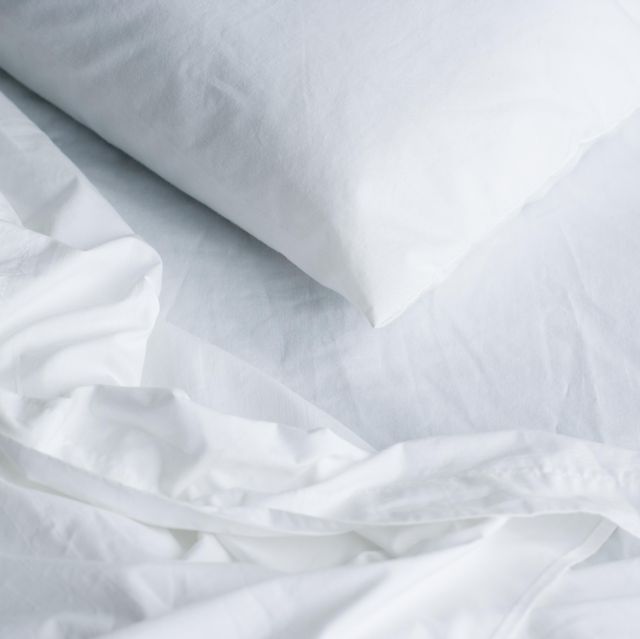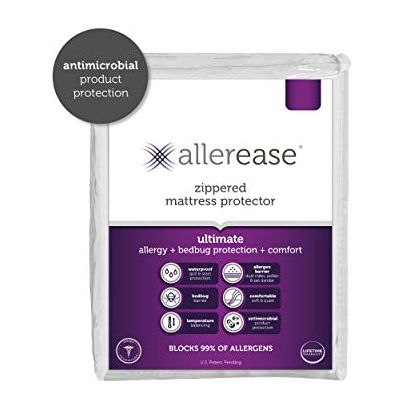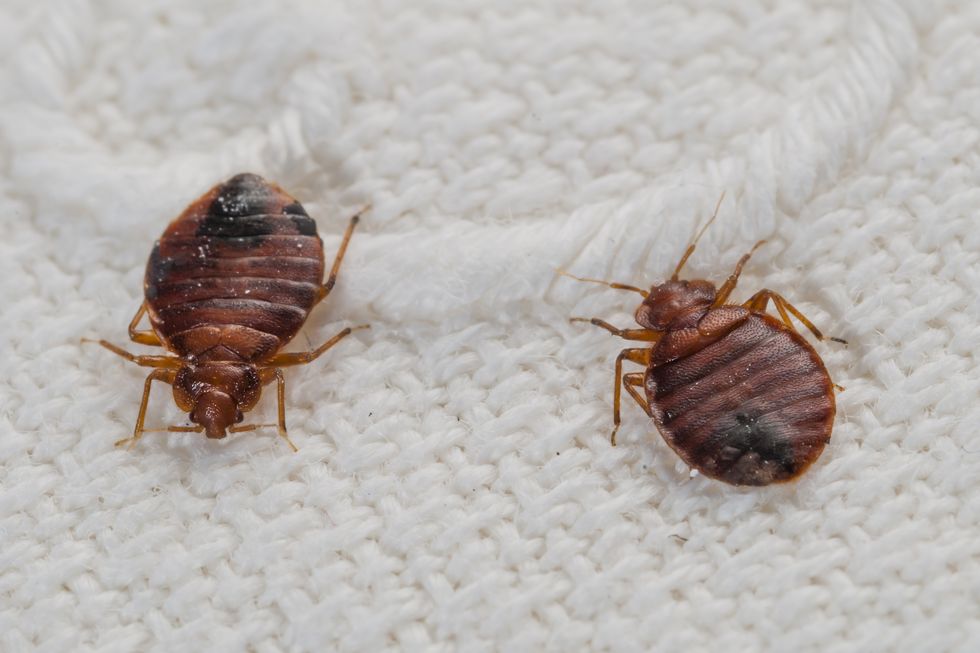The resurgence of bed bugs in American homes has caused many a sleepless night — but not everything you hear is true. Before you start pointing fingers at the reasons your home is infested or why you do — or don't — have a bed bugs problem, know this: Entomologist Richard Pollack, Ph.D., has found fewer than 10% of the critters people identify as bed bugs actually are bed bugs. That's also why he doesn't trust websites that list reports of bed bugs at hotels.
If you suspect you've got some unwelcome visitors at your house, here is everything you need to know about these nasty insects first:
Where do bed bugs come from?
Bed bugs most notoriously hitch rides on luggage, but traveling isn't the only way to pick them up: They can easily be carried into the house on secondhand furniture, clothing, boxes, and pillows, so inspect such items very carefully. Encasement products like Good Housekeeping Seal holder AllerEase mattress protector can also prevent bugs that do make it inside from hunkering down in crevices.
But while reports of bed bugs at movie theaters and in retail stores have made headlines, it's rare that someone actually brings them home, says Jody Gangloff-Kaufmann, an urban entomologist at Cornell University.
What are bed bugs attracted to?
Whether you have a messy home or a neat home, bed bugs only care that their food source, a.k.a. people, are nearby. Luckily, there's no evidence they transmit diseases as they feed. The real threat: Itchy, red bites, which are the first sign of an infestation.
Can bed bugs bite through clothes?
Unfortunately, long-sleeved pajamas won't shield you from bed bug bites. In fact, that's one of the tell-tale signs of an infestation. "If you wake up with numerous bites, especially under your clothes, it could be bed bugs," says David Dunham of Go Green Bedbug Dogs.
Not everyone experiences the same skin reaction though. "It's common for one person to become the host or the person getting all the bites, while their spouse or partner will get no bites at all," he adds. "Usually the person not getting bites will discredit their partner's concerns.
Now, here's how to get rid of bed bugs:
- Don't wait too long to contact a professional. "The biggest mistake people make is waiting too long to call for help, because the longer the problem goes on, the bigger of a chance they'll spread within the home and even outside of the home," Dunham says.
- Get written quotes from three licensed exterminators detailing their course of action, including pesticides, traps, and/or heat treatments they'll use and how and where they'll use them. While some people think over-the-counter sprays are a solution, pyrethroid-based pesticides may kill or repel some of the insects, they can be dangerous if misused, and it's doubtful you'll be successful on your own.
"You should ask lots of questions to the companies you interview, because a good company will answer them and will never pressure you to make an appointment," says Dunham. Asking the company about their success rate and if their treatment comes with a guarantee, should their efforts not be successful, is a must. - Search your furnishings, particularly along and behind the headboard and sides of the mattress. Bed bugs will hole up in furniture, along baseboards, in cracks in walls and, yes, in beds. Look for black stains (they leave behind blood and fecal matter), discarded molted skins, and the bugs themselves.
- Send or bring evidence to your local Cooperative Extension office (usually $5) or contact an online bug-ID service such as Pollack's IdentifyUS ($30) for a diagnosis. Accuracy is very important, so pinpoint the areas and rooms in your home that need treatment and act swiftly.
- Seal any infested bedding and clothing in clean plastic bags. Sort items based on how you would wash clothes and make a separate dry-clean only pile, advises the University of Minnesota Department of Entomology. Then wash and dry the items at the hottest temperature they can withstand.
While some bugs will die in the washing machine, it's the heat of the dryer that will kill more of them. At least 60 minutes on a high-heat setting should do the trick, according to New York State Integrated Pest Management. Immediately dispose of the used plastic bags and put clean clothes in new ones. Don't take the items out of the bag until the infestation is successfully controlled. - Thoroughly vacuum rugs, floors, furniture, beds, and all cracks and crevices to cut down on your bed bug population, according to the Environmental Protection Agency (EPA). Afterwards, put the contaminated vacuum bag in a tightly sealed bag and throw it away in an outside garbage bin.

Caroline is a writer and editor with almost a decade of experience. From 2015 to 2019, she held various editorial positions at Good Housekeeping, including as health editor, covering nutrition, fitness, wellness, and other lifestyle news. She's a graduate of the Medill School of Journalism and dreams of the day Northwestern will go back to the Rose Bowl.















